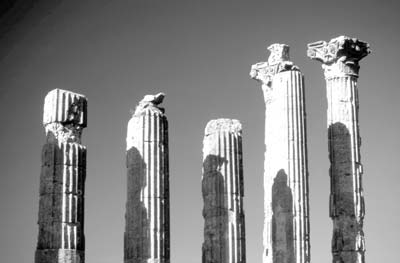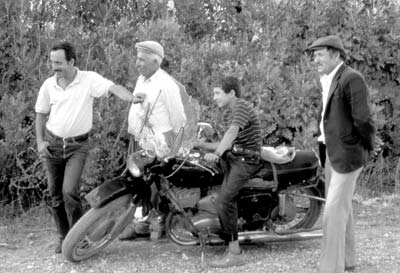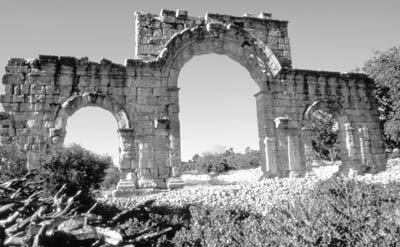Shadows of time on Diocaesarea, Turkey
I guess I’m a dinosaur. Though I now have a digital camera, I’m more comfortable with my old Nikon and slide film recording Moreen’s and my travels. Yes, these slides are the basis of my ITN articles, but, more so, they are our memories.
When screening slides for my Termessos, Turkey, article (Jan. ’07, pg. 102), one flashed on the screen that immediately brought back wonderful memories of another ancient village, Diocaesarea, better known now by its Turkish name, Uzuncaburç.
Some may judge this slide, a single row of five monolithic, granite Corinthian columns, as only average, but, for us, we vividly remember the ambience of being with friendly villagers at sunset watching each column in succession slowly cast a shadow onto the next, then the next, until all five were cloaked in varying levels of darkness.
Although Termessos and Diocaesarea are both located high in mountains above the Mediterranean Sea, they are starkly different. Termessos continues to project the devastating rewards of endless wars, whereas Diocaesarea now imparts an image of a peaceful village built among and around an ancient Greek and, later, a Roman city.
Diocaesarea was originally two separate cities, with Olba, a Zeus religious cult center in the Hellenistic era, adjacent to the newer Roman city of Diocaesarea. Subsequently, the two were connected by a road marked with Roman milestones dated as early as A.D. 75-76. How these two cities were otherwise separated and who controlled whom is unknown.
Few tourists venture the twisting, 20-mile drive from Silifke on the Mediterranean to Uzuncaburç, set in a flat area in mountains at 3,500 feet in elevation. En route there are partial ruins of a watchtower likely built during the Hellenistic period for protection. The tower looks similar to the Treasury Building at Delphi, Greece. Driving higher, Uzuncaburç village homes appear scattered around extensive ruins of both of its historical cities, Olba and Diocaesarea.
At the city entrance there is a Roman theater (built A.D. 161-169) for 2,500 people and, surrounding it, a supposedly holy road with more ancient ruins.
The highlight of Uzuncaburç is its (possibly) early-third-century-B.C. or mid-second-century-B.C. Hellenistic Temple of Zeus Olba, with its 36 columns and a large courtyard surrounded by a high wall. Parts or all of the 36 columns remain standing. Later, in Christian times, this temple was converted into a church.
Since these ancients believed in divine intervention, they also built the Temple of Tykhe (Fortune) on this holy road for their continued success and good luck.
Just prior to sundown, our small tour group rendezvoused on Uzuncaburç’s first-century-A.D. Roman colonnaded road. There, while shadows increased on five Corinthian columns, we talked with villagers with the help of our Turkish tour guide. It was a wonderful opportunity to interact and observe the quiet peaceful life of an unspoiled Turkish village steeped in history. I can only wonder if Diocaesarea (Uzuncaburç) has changed in the past seven years.
Minutiae
• For tourist information re Turkey, contact the country’s Turkish Culture & Tourist Office (821 U.N. Plaza, 4th Fl., New York, NY 10017; 877/367-8875 or 212/687-2194, www.tourism turkey.org).
• There are several good webpages with detailed history and photographs of Diocaesarea (Uzuncaburç), Turkey. Just run a search.
• Checking online for hotels in Silifke, I found prices so inexpensive that I question their quality. Continuing my search, I found several of what appear to be good hotels 55 miles to the east in Mersin (e.g., Hilton Mersin at $120-$255) plus, in Tasucu just west of Silifke, the 22-room Lades Motel at €60 (near $79).
• Though there is no current travel warnings for Turkey, readers should always be observant when visiting any of the countries discussed in this column.
Coming up: In the first of a 2-part adventure, let’s follow the Euphrates River from Aleppo, Syria, to the Iraqi border.



